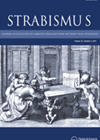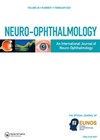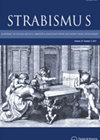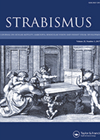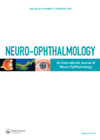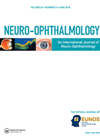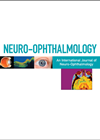
Journal Reviews
Tutopatch® in surgical management of third nerve palsy
his study evaluates the benefit of using Tutopatch® to elongate the extraocular muscles in patients with third nerve palsy who have residual strabismus after unsuccessful surgery and no other surgical options considered to be appropriate. The study included nine patients...
Detailed overview of diplopia causes and outcomes for a single tertiary care centre
The purpose of this study was to study the aetiology, progression and outcome in patients with binocular diplopia presenting to the ophthalmology department of a tertiary care centre in India. The study had a prospective observational design where all patients...
Nishida procedure for VIcnp
This study reports results in treatment of complete sixth nerve palsy (VIcnp) by modified Hummelscheim (Nishida’s) procedure; vertical muscle halves after splitting were secured with anchoring sutures to the sclera with anchoring of only the temporal muscle margins to the...
A rare case of oculomotor nerve palsy from presumed cavernous angioma
Cavernous angiomas of the cranial nerves are extremely rare, and those of the oculomotor (third) nerve are rarer still. The authors present a single case study of presumed cavernous angioma involving the subarachnoid portion of the left third nerve, which...
EP in a case of abducens nerve palsy
Ecchordosis physaliphora (EP) is a rare non-malignant mass that originates from remains of the notochord and is typically asymptomatic. Symptomatic cases are extremely rare, and the majority are managed by surgical resection. This case study reports a 42-year-old male who...
Imaging requests for CNP
The authors sought to answer the question of to what extent do differences in policy exist between ophthalmologists and neurologists regarding imaging by MRI of patients with acquired ocular cranial nerve palsy (CNP). They conducted a literature review leading to...
Gradenigo syndrome
The authors report four cases of Gradenigo syndrome (GS) with patients aged five to 70 years; three with classic acute presentation and one with presentation of chronic suppurative otitis media, cholesteatoma and sixth nerve palsy. The authors discuss anatomy, neuroimaging,...
Characteristics and incidence of sixth nerve palsy in children with intracranial hypertension
The authors report the incidence and characteristics of sixth cranial nerve palsy in paediatric patients with intracranial hypertension. A retrospective review of records was performed in central Ohio over a three year period and nine children were found to have...
An unusual third nerve palsy case report
The authors present the unusual case of a 23-year-old male presenting to hospital with right eye pain, right upper eyelid ptosis, blurred vision and diplopia, developing immediately after a penetrating injury to his right upper eyelid. On assessment he was...
An unusual case of partial oculomotor nerve palsy
The authors present an unusual case of intra-axial oculomotor nerve involvement due to midbrain infarction. The 65-year-old male patient presented with unilateral complete blepharoptosis and slight limitation of upgaze. Neurological examination revealed a complete ptosis of the left eyelid, slight...
Surgical outcomes in third nerve palsy
The authors of this article explore the factors associated with successful surgical outcomes in third nerve palsy, which is known to be difficult to treat. A number of case notes were reviewed for patients who underwent surgery or botulinum toxin...
Surgical success rates in abducens palsy management
The aim of the study was to identify factors associated with surgical outcomes in isolated abducens palsy. To achieve this goal the authors reviewed the records of adult patients with abducens palsy who underwent strabismus procedures during a fourteen year...

